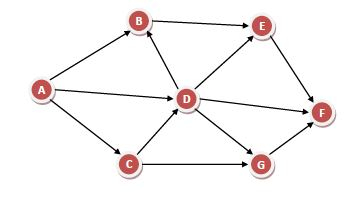
 Data Structure
Data Structure Networking
Networking RDBMS
RDBMS Operating System
Operating System Java
Java MS Excel
MS Excel iOS
iOS HTML
HTML CSS
CSS Android
Android Python
Python C Programming
C Programming C++
C++ C#
C# MongoDB
MongoDB MySQL
MySQL Javascript
Javascript PHP
PHP
- Selected Reading
- UPSC IAS Exams Notes
- Developer's Best Practices
- Questions and Answers
- Effective Resume Writing
- HR Interview Questions
- Computer Glossary
- Who is Who
Directed Acyclic Graph (DAG)
Definition
In computer science and mathematics, a directed acyclic graph (DAG) refers to a directed graph which has no directed cycles.
Explanation
In graph theory, a graph refers to a set of vertices which are connected by lines called edges. In a directed graph or a digraph, each edge is associated with a direction from a start vertex to an end vertex. If we traverse along the direction of the edges and we find that no closed loops are formed along any path, we say that there are no directed cycles. The graph formed is a directed acyclic graph.
A DAG is always topologically ordered, i.e. for each edge in the graph, the start vertex of the edge occurs earlier in the sequence than the ending vertex of the edge.
Example

In the above directed graph, if we find the paths from any node, say u, we will never find a path that come back to u. Hence, this is a DAG.
Application Areas
Some of the main application areas of DAG are −
Routing in computer networks
Job scheduling
Data processing
Genealogy
Citation graphs

